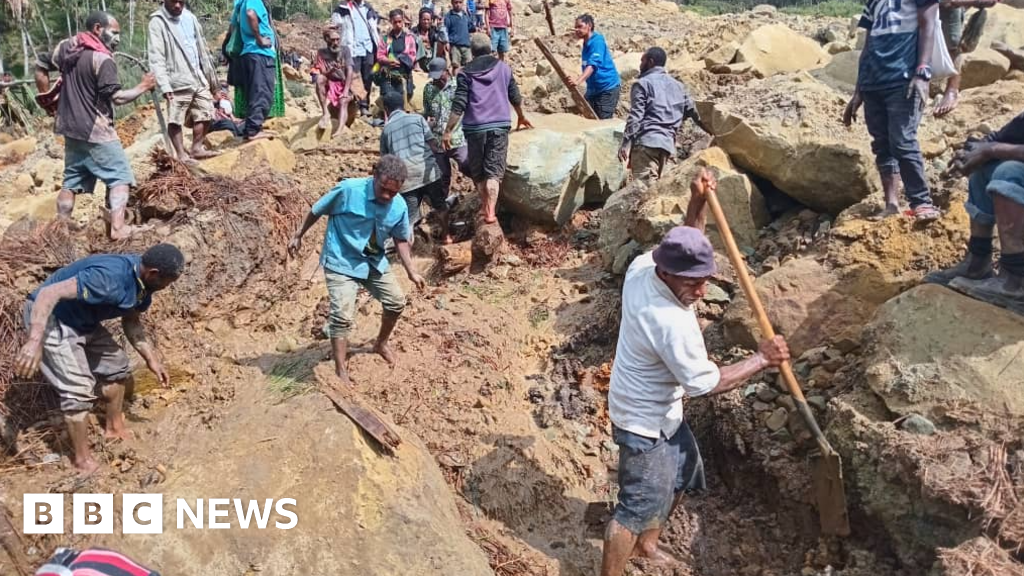Papua New Guinea authorities say nearly 7,900 people living near the site of a deadly landslide are “at risk” as rock and debris continues to move down the hillside.
An alert for potential evacuation has been put out, with a province official saying the mountain remains “very active”.
Rescuers say it is increasingly unlikely that victims will be found alive in the rubble.
The country’s disaster agency says it fears about 2,000 people were buried when a mountain side collapsed last Friday.
This is much higher than the UN’s estimate of about 670 victims.
The UN says it has been difficult to establish an exact death toll as access to the site and those buried under the mass remain difficult.
Part of that is due to complications around the search and recovery mission, which has now largely turned into a retrieval operation of bodies, various UN officials have said.
“It is not a rescue mission, it is a recovery mission,” Niels Kraaier from Unicef Papua New Guinea told news agency AFP. “It is very unlikely they will have survived.”
Only six bodies had been recovered as of Tuesday, according to local officials.
Villagers have been using using shovels, sticks and their bare hands to try and remove huge rocks and rubble amid hold-ups in the arrival of heavy machinery, and also cultural sensitivities around the use of such machines like excavators near bodies.
The terrain also remains dangerous as rocks continue to fall. Videos taken during the day have shown rocks tumbling down the mountain.
“It’s still very active. The mountain is breaking up, ” Sandis Tsaka, Enga Provincial Administrator told the BBC.
“There’s continuous movement of rock and debris which is making our search and rescue and recovery operations a challenge,” he added.
The rubble remains 10m deep in some places and the mass of debris is still moving down the hillside, prompting authorities to alert nearby communities to the risk and issuing evacuation notices.
“Because of the landslide, the impact area of the landslide is gradually increasing. So the homes and properties that were not affected by the original landslide area are growing every day,” Mr Tsaka said.
Another village close to the first-hit Yambali village was now also in danger, he said.
There is also growing alarm over the risk of infection and disease in the area as the mass of bodies trapped under the rubble begin to decay.
The UN had warned that currents were flowing down the hillside under the rubble.
“The water that is stuck between the ground and the debris is flowing – and the bodies are starting to decay. Can you image [the impact] on more than 2,000 bodies buried under this land- unable to be removed,” UN migration agency official Serhan Aktoprak told the BBC on Tuesday.
Amid the treacherous conditions, aid groups say they are focusing on the immediate task of getting basic supplies like food, water and hygiene kits to residents.
But there have been several barriers- including the highway to the village being blocked and damaged by the landslide.
On Tuesday, it was reported that a bridge south of the landslide area, connecting province centres Hagen and Wabeg, had also collapsed making it more difficult for humanitarian groups delivering relief.
Australia has pledged an air lift of supplies which is expected to arrive on Wednesday.
Local officials say about 3,800 people had been living in the hillside village prior to the landslide, which took place around 03:00 on Friday morning and flattened more than 150 homes.
The mountain’s collapse has been attributed to weeks of heavy rain and other wet conditions in the area.
Prime Minister James Marape had earlier in the week sent his condolences and directed national response teams to the region.
The disaster comes as Mr Marape faces political pressure – parliament was expected to vote on a no-confidence motion against him on Tuesday.

